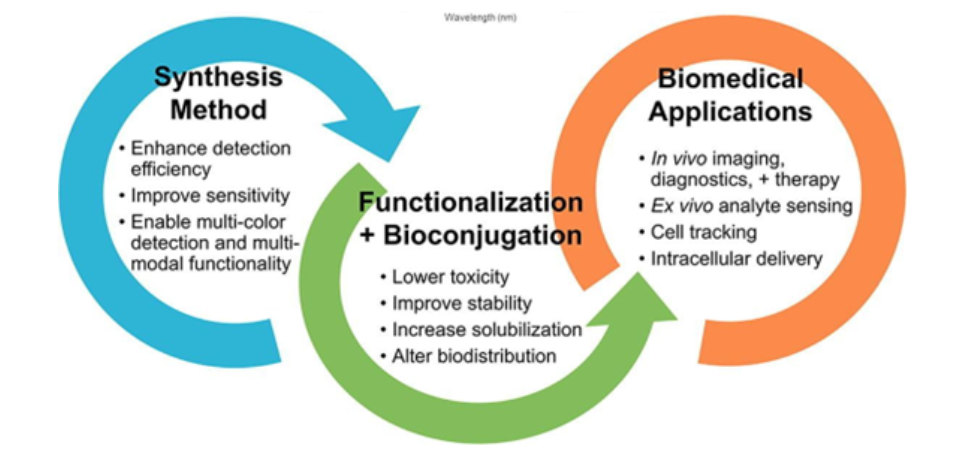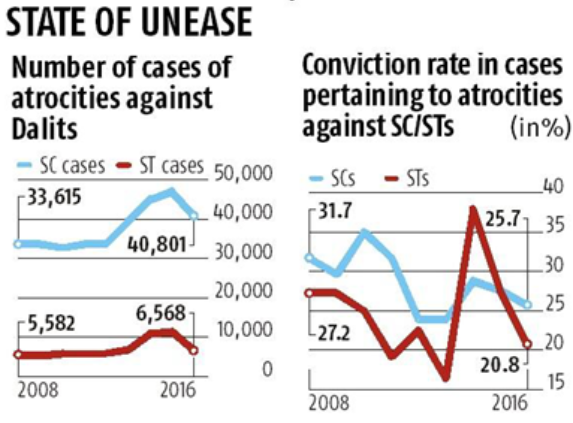Wednesday, 11th October 2023
Chabahar Port - India and Iran
In News: India and Iran have narrowed the gap on the major issue of arbitration in the 10-year agreement for operations at the strategic Chabahar port.
About
- Chabahar is important for its fishery sector and will act as an important trade center connecting South Asia, Central Asia, and the Middle East. India is building a railway line from Chabahar Port to the mineral-rich Hajigak region of Afghanistan.
- India and Iran are exploring ways to address the depletion of Iran's rupee reserves, that impacted trade, especially in commodities like rice, tea, and pharmaceuticals.
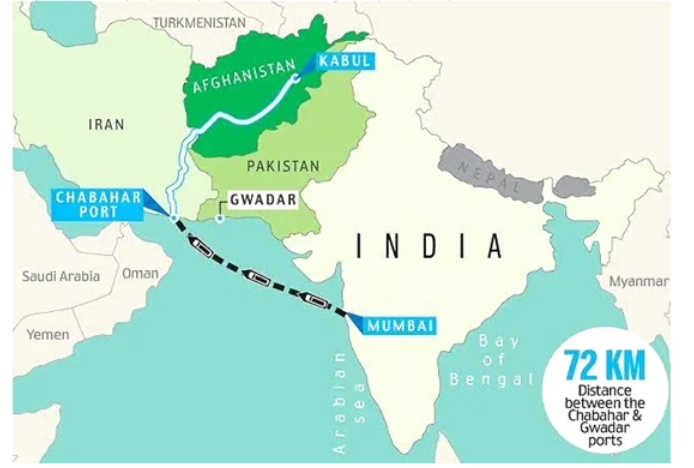
- Chabahar is Iran's only oceanic port situated in Sistan and Baluchistan Province, on the Makran coast. There are two main ports in Chabahar – the Shahid Kalantari port and the Shahid Beheshti port.
Significance of Chabahar Port
- Diversified Trade Access: Chabahar Port offers India an alternative trade route, reducing its reliance on Pakistan for access to Afghanistan and Central Asia. This is crucial due to the often-tense relations between India and Pakistan.
- Port enhances India's connectivity with Iran, a key entry point to the International North-South Transport Corridor, which facilitates sea, rail, and road routes connecting India, Iran, Russia, Central Asia, and Europe.
- Economic Advantages: Chabahar Port opens doors to the resource-rich and economically dynamic Central Asian region. It has the potential to significantly boost India's trade and investment prospects in these markets, leading to economic growth and job creation within India.
- Humanitarian Support: Chabahar Port can play a pivotal role as an entry point for humanitarian assistance and reconstruction efforts in Afghanistan. India can utilize the port to deliver aid, support infrastructure development, and contribute to regional stability.
- Geopolitical Influence: Through its development and operation of Chabahar Port, India can bolster its strategic influence in the Indian Ocean region, thus fortifying its geopolitical position.
|
UPSC Civil Services Examination, Previous Year Question (PYQ) Prelims
(a) India’s trade with African countries will enormously increase. (b) India’s relations with oil-producing Arab countries will be strengthened. (c) India will not depend on Pakistan for access to Afghanistan and Central Asia. (d) Pakistan will facilitate and protect the installation of a gas pipeline between Iraq and India. Answer: (c) Mains Q. In what ways would the ongoing U.S-Iran Nuclear Pact Controversy affect the national interest of India? How should India respond to this situation? (2018) Q. The question of India’s Energy Security constitutes the most important part of India’s economic progress. Analyse India’s energy policy cooperation with West Asian countries. (2017) |
Prompt NPA Labeling for Willful Defaulters
Why in News: Recently, the Reserve Bank of India (RBI) in a draft proposal suggested that lenders should classify a borrower as a willful defaulter within six months of their account being declared a non-performing asset (NPA).
Key Highlights of the RBI Draft:
- In the new system, willful defaulter borrowers must be identified by the lender within a defined six-month timeframe; this requirement was not there in the old one.
- Within six months of an account becoming an NPA, lenders must evaluate willful default for accounts exceeding Rs 25 lakh.
- Evidence of willful default is examined by an Identification Committee established by lenders.
- For willful defaulters, policies mandate non-discriminatory photo posting, and they are prohibited from receiving credit for up to one year following their removal from the List of willful Defaulters (LWD).
- They are also prohibited from receiving credit for new endeavours for five years following LWD removal.
Non-Performing Assets (NPAs):
- Loans or advances that are in default or are behind on scheduled principle or interest payments are categorized as NPAs. The majority of the time, debt is categorized as non-performing after loan payments have been missed for at least 90 days. If principal and interest are not paid for two cropping seasons in agriculture, the loan is considered to be non-performing (NPA).
- NPAs are of two types:
- Gross NPA: The total amount of all individual loan defaults is known as gross NPAs.
- Net NPA: The amount realized after the provision amount has been subtracted from the gross non-performing assets is known as net NPAs.
Initiatives taken to reduce NPAs:
- National Asset Reconstruction Ltd (NARC):
- It will operate as an asset reconstruction company.
- In order to relieve banks of their NPA, it would purchase bad loans from them.
- The stressed loans will subsequently be put up for sale by NARC to distressed debt buyers.
- For the purpose of selling these distressed assets on the market, the government has already established India Debt Resolution Company Ltd (IDRCL). IDRCL will consequently make an effort to sell them in the market.
- Securitization and Reconstruction of Financial Assets and Enforcement of Security Interest (SARFAESI) Act, 2002:
- According to the SARFAESI Act, banks and other financial institutions are free to seize collateral assets and sell them to recover unpaid debts.
- It enables banks to send demand notifications to borrowers who are in default and has measures for the enforcement of security interests.
- Insolvency and Bankruptcy Code (IBC), 2016:
- A comprehensive framework for the settlement of insolvency and bankruptcy in India is provided by the IBC.
- It aims to establish a creditor-friendly environment and speed up the settlement of stressed assets.
- A debtor or creditor may start bankruptcy procedures against a non-paying borrower in accordance with the IBC.
- To monitor the procedure, it formed the National Company Law Tribunal (NCLT) and the Insolvency and Bankruptcy Board of India (IBBI).
Willful Defaulter:
- A borrower or guarantor who has committed willful default and the outstanding balance is Rs. 25 lakh or more is referred to as a willful defaulter.
- A borrower whose account has been labelled as doubtful or a loss and has an outstanding amount of Rs 1 crore or more is referred to as a large defaulter.
|
UPSC CSE Previous Years Questions Prelims
Which of the statements given above is/are correct? (a) 1 only (b) 2 only (c) Both 1 and 2 (d) Neither 1 nor 2 Answer: (b) |
More Frequent Cyclones in Eastern Arabian Sea
In News: Recently, a study published in the Nature Journal highlights the concerns related to Climate Change causing frequent Tropical Cyclones (TC) in the Eastern Arabian Sea.
Key Highlights of the Study:
- Frequency and Severity of Cyclones: Tropical cyclones are becoming increasingly common and severe in the Eastern Arabian Sea, which is close to India's west coast, as a result of changes in the ocean and atmosphere's warming trends.
- Impact of Indian Ocean Dipole (IOD): In the western Indian Ocean area, the positive phase of IOD, when one portion of the ocean warms more than the other, causes higher sea surface temperatures and more precipitation.
- Human Interference: Human-induced climate change is contributing to the intensification and higher frequency of cyclones in the Arabian Sea.
- Impact on Western Indian Coastline: The densely populated coastal regions along India's western coast, from Gujarat to Thiruvananthapuram, are at greater risk due to the intensity and rise in cyclone frequency, and face additional dangers such as strong winds, storm surges, heavy rainfall, and other associated hazards.
- Recommendations: The study stresses the need for modernised regulations and technology connected to storm warnings and localised weather services and argues for adjustments to development strategies to take into account growing cyclone threats.
Cyclones:
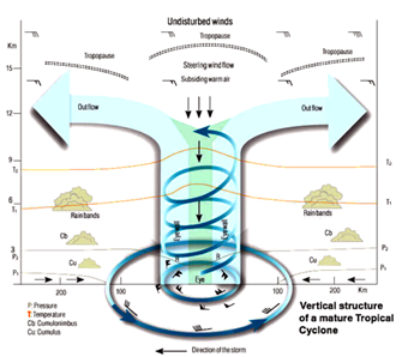
- A low-pressure region which is surrounded by rapid inward air circulation is called cyclone. In Northern hemisphere, the air moves clockwise and in the Southern Hemisphere it moves anticlockwise. Storms and unfavourable weather are frequently present during cyclones.
- Classification: Generally, cyclones are of two types:
- Tropical cyclones: Tropical cyclones develop in the region between the Tropics of Capricorn and Cancer. They are large-scale weather systems developing over tropical or subtropical waters, where they get organized into surface wind circulation. Tropical Cyclones are one of the most devastating natural calamities in the world.
- Extra Tropical/ Temperate cyclones: These are referred to as mid-latitude depressions, temperate cyclones, frontal depressions and wave cyclones. These are active above the mid-latitudinal region between 35° and 65° latitude in both the hemispheres. The direction of movement is from west to east and more pronounced in the winter seasons.
- Cyclones in India:
- Tropical cyclones originate over the Bay of Bengal, Arabian Sea and the Indian ocean. These tropical cyclones have very high wind velocity and heavy rainfall and hit the Indian Coastal states of Tamil Nadu, Andhra Pradesh, West Bengal, Odisha and Gujarat (These five states are more vulnerable to cyclone disasters than others in India).
- Most of these cyclones are very destructive due to high wind velocity and torrential rain that accompanies it.
- Management of Cyclones:
- The structural measures include construction of cyclone shelters, construction of cyclone resistant buildings, road links, culverts, bridges, canals, drains, saline embankments, surface water tanks, communication and power transmission networks etc.
- Non-structural measures like early warning dissemination systems, management of coastal zones, awareness generation and disaster risk management and capacity building of all the stakeholders involved.
|
UPSC CSE Previous Years Questions Prelims
Which of the statements given above is/are correct? (a) 1 only (b) 2 and 3 only (c) 2 only (d) 1 and 3 only Answer: (c)
Answer: (b) Mains
|
Shri Ramalinga Swamy - Edukemy Current Affairs
Why in news? Recently, The Prime Minister, Shri Narendra Modi addressed on the occasion of the 200th birth anniversary (5 October 1823 – 30 January 1874) of Shri Ramalinga Swamy also known as Vallalar.
About:

- Shri Ramalinga Swamy was a prominent Tamil poet in the 19th century.
- He belonged to a line of Tamil saints known as ‘gnana siddhars’ (gnana meaning higher wisdom).
- Vallalar was strongly against the caste system and initiated the 'Samarasa Vedha Sanmarga Sangam' in 1865, later renamed 'Samarasa Suddha Sanmarga Sathya Sangam.'
- According to Suddha Sanmarga, the prime aspects of human life should be love, connected with charity and divine practice, leading to pure knowledge.
- Vallalar’s vision transcends religious, caste, and creed barriers, recognizing divinity in every atom of the universe.
- Establishments:
- He established ‘The Sathya Dharma Salai,’ a free food facility in Vadalur, Tamil Nadu in 1867, serving all people without caste distinctions.
- Vallalar opened the ‘Sathya Gnana Sabha’ (Hall of True Knowledge) in Vadalur.
- This aimed to propagate spiritual knowledge and foster a sense of unity among people.
- Philosophical Beliefs and Teachings:
- He introduced the concept of “Jeeva Karunyam,” advocating non-violence and reverence for all life forms.
- One of Vallalar's primary teachings was "Service to Living Beings is the path of Liberation/Moksha."
- He forbade killing animals for the sake of food and advocated feeding the poor as the highest form of worship.
- Vallalar believed that the intelligence possessed by humans is illusory (Maya) intelligence and not accurate or final.
Rescued Gangetic Dolphins: Ganga Basin Success
Why in news? A recent publication by scientists and researchers has revealed that 19 Gangetic River dolphins had been rescued from the irrigation canals of the Ganga-Ghagra basin in Uttar Pradesh between 2013 and 2020.
About:

- Ganges River Dolphin (Platanista gangetica) is a freshwater species.
- Habitat: It inhabits the Ganges-Brahmaputra-Meghna and Karnaphuli-Sangu River systems of Nepal, India, and Bangladesh.
- According to the recent study in the Ganga River Basin, the species recorded from the mainstream of Ganga River followed by the tributaries, Ghagra, Kosi, Gandak, Chambal, Rupnarayan, and Yamuna.
- Common Names: Blind dolphin, Ganges dolphin, Ganges susu, hihu, side-swimming dolphin, South Asian River Dolphin
- Features:
- A long thin snout, rounded belly, stocky body and large flippers are characteristics of the Ganges River dolphin.
- It can only live in freshwater and is essentially blind.
- They hunt by emitting ultrasonic sounds, which bounces off of fish and other prey, enabling them to “see” an image in their mind.
- Being a mammal, the Ganges River dolphin cannot breathe in the water and must surface every 30-120 seconds.
- Because of the sound it produces when breathing, the animal is popularly referred to as the 'Susu'.
- They are frequently found alone or in small groups, and generally a mother and calf travel together.
- Females are larger than males and give birth once every two to three years to only one calf.
- Importance:
- The government of India declared it the National Aquatic Animal in 2009.
- It is also the State Aquatic Animal of Assam.
- It is a reliable indicator of the health of the entire river ecosystem.
- Conservation status:
- IUCN: Endangered
- Wildlife (Protection) Act: Schedule-I
- CITES: Appendix I
Third Intifada - Edukemy Current Affairs
Why in news? The recent escalation in the Hamas-Israel conflict has raised concerns about a Third Intifada.
About:

- Hamas is the largest Palestinian militant Islamist group that has controlled Gaza since 2006.
- Currently, it governs more than two million Palestinians in the Gaza Strip.
- Foundation:
- The group was founded in the late 1980s, after the beginning of the first Palestinian intifada, or uprising, against Israel’s occupation of the West Bank and Gaza Strip.
- Hamas as a whole, or in some cases its military wing, is designated a terrorist group by Israel, the United States, the European Union, the United Kingdom, and other countries.
- Intifada means 'shake off' in Arabic and was used to describe the Palestinian uprising against Israeli presence in the West Bank and Gaza.
- The First Intifada lasted from 1987 to 1993, and the Second Intifada from 2000-2005.
- The uprisings were spearheaded by Palestinian youth who were fed up with the treatment they faced from Israeli settlers.
- Tensions between Israel and Palestine have not subsided since the end of the Second Intifada.
Automatic 'Status Holder' Certificates Boost Indian Exports
Why in news? Recently, the Union Commerce Minister unveiled system-based automatic ‘Status Holder’ certificates under Foreign Trade Policy 2023.
About:
- The Status Holder certification program provides credibility to Indian exporters in the international markets.
- At present, the exporter is required to file an online application along with an export certificate from a chartered accountant for the grant of status. The DGFT Regional Offices will then issue the certificate in three days.
- The new arrangement eliminates the need for exporters to apply for a Status Certificate manually, relying instead on an IT system's assessment based on available merchandise export data and risk parameters from the Directorate General of Commercial Intelligence and Statistics (DGCIS).
- In addition, it provides certain other privileges including simplified procedures under FTP 2023 and priority custom clearances on a self-declaration basis, exemption from compulsory negotiation of documents through banks, exemption from filing Bank Guarantees for FTP schemes, etc.
- This shift reduces compliance burdens and fosters ease of doing business.
- This initiative, recognizing about 20,000 exporters as Status Holders, is poised to significantly boost the export ecosystem and help achieve India's export target of USD 2 Trillion by 2030.
Chakravat 2023 - Edukemy Current Affairs
Why in news? The 2023 edition of the Annual Joint HADR Exercise, CHAKRAVAT, is being hosted by the Indian Navy at Goa from 09 to 11 Oct 23.
About:
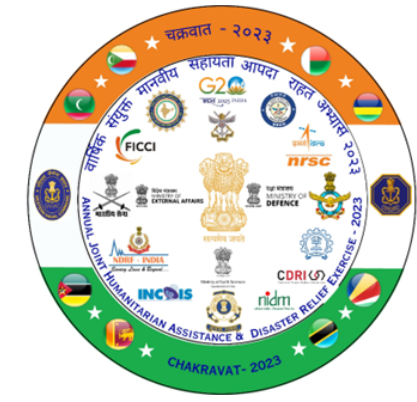
- Exercise CHAKRAVAT is an Annual Joint Humanitarian Assistance and Disaster Relief HADR Exercise (AJHE).
- The exercise has been conducted by the Indian Army, Indian Navy and Indian Air Force in rotation since 2016. The last edition of the exercise was conducted at Agra by IAF.
- The 2023 edition of the exercise is being hosted by the Indian Navy at Goa.
- Since its first edition in 2015, the Annual Joint HADR Exercise, CHAKRAVAT has transformed itself into a multi-agency endeavor.
- It involves the participation of all three Services, Paramilitary Forces, as well as several disaster response organizations, NGOs, academic institutions, and international organizations.
2023 Edition
- AJHE-23, planned over three days includes a seminar, a Table-Top Exercise, and a Multi-Agency Capability Demonstration.
- The 2023 edition would further synergize efforts at the national level among all stakeholders, as well as witness participation from eight countries of the Indian Ocean Region.
- The exercise will witness participation from various national agencies namely, National Disaster Management Authority (NDMA), National Disaster Response Force (NDRF), National Institute for Disaster Management (NIDM), Indian Army, Indian Navy, Indian Air Force, Coast Guard, Indian Metrological Department (IMD) and other organizations.
Operation Kachchhap - Edukemy Current Affairs
Why in news? Recently, the Directorate of Revenue Intelligence (DRI) saved 955 live baby Gangetic turtles in a crackdown on illegal wildlife trade in multicity Operation “Kachchhap”.
About:
- The Wildlife Protection Society of India (WPSI) launched Operation Kachhapa in September 1998.
- The objective is to reduce turtle mortality and try to safeguard the future of the species by concentrating on three main activities:
- To improve patrolling of non-fishing zones and the protection of nesting sites.
- To support legal action on turtle conservation and fishing law violations.
- To build public support and awareness of sea turtle conservation issues.
More About the news:
- These baby turtles, include species like the Indian Tent Turtle, Indian Flapshell Turtle, Crown River Turtle, Black Spotted/Pond Turtle, and Brown Roofed Turtle.
- The DRI had received intelligence about a syndicate engaged in the illegal trafficking and trading of these turtles, some of which are considered vulnerable or near-threatened species according to the IUCN Red List and are protected under the Wildlife (Protection) Act, 1972.
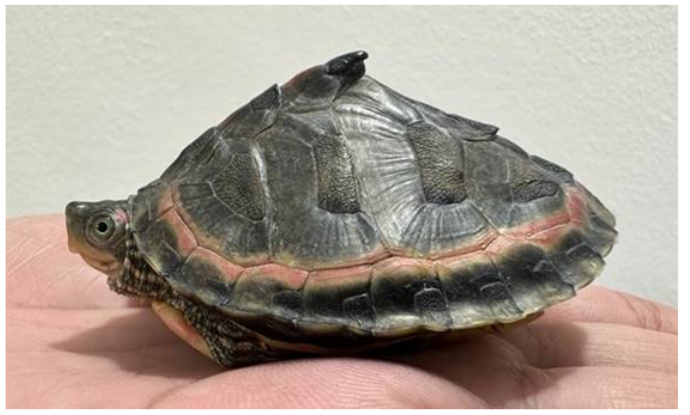
- This operation is part of the DRI’s ongoing efforts to protect the environment and combat illegal wildlife trafficking.
Attack of Hamas on Israel - Edukemy Current Affairs
Exam View: About the Hamas Attack; History of Israel-Palestine Conflict; Impact of the Conflict on the World; Impact of the Conflict on India.
Context: A state of war has been declared by Israel, after the Hamas militants infiltrated the Israeli territory and took many citizens hostage.
About the Hamas Attack:
- The current escalation began on October 7, when Hamas launched a surprise attack on Israel, firing thousands of rockets and infiltrating its border with armed militants.
- Over 600 deaths and 1,600 injuries were recorded. Coordinated infiltration at 22 places by about a thousand militants was also observed.
- More than 5,000 rockets were launched from Gaza Strip, which cause havoc in Israel despite the presence of Iron Dome for intercepting short range missiles.
- Israel Defense Forces (IDF) have launched Operation ‘Iron Swords’ in retaliation for an unprecedented and “surprise” attack by Hamas.
- Hamas is a Palestinian Islamist militant group, supported and funded by Iran. Hamas rules the Gaza Strip and has been designated as a terrorist group by Israel, and Western world.
History of Israel-Palestine Conflict:

- The conflict between Jews and Arabs in Palestine began in the late 19th and early 20th centuries, when Jewish immigration to the region increased. This led to tensions between the Jewish settlers and the Arab population, who saw the influx of Jews as a threat to their homeland.
- The Israeli-Palestinian conflict began in the late 19th century, when the British government promised to support the establishment of a Jewish homeland in Palestine. After World War II, the UN proposed a plan to divide Palestine into two states, but the Arab leaders rejected it.
- Israel declared independence in 1948, leading to a war with neighbouring Arab states and the displacement of hundreds of thousands of Palestinians. The conflict has continued ever since.
Impact of the Conflict on the World:
- Rise in Shipping cost: The Israel-Palestine conflict could lead to higher shipping costs around the world. This is because shipping companies will have to pay higher insurance premiums to cover the risk of their ships being damaged or attacked in the region.
- Rise in Oil Prices: The conflict could also trigger a global oil crisis as the middle-east supply chain will be affected due to instability. This could escalate the cost of crude oil.
- Regional war: The Israel-Palestine conflict could escalate into a regional war, drawing in global powers such as Russia, the US, and Iran causing regional instability.
- Israel-Arab World Relations: Israel’s relations with the Arab world, which was moving towards normalisation, could witness a reversal as an effect of these events.
- Deepend global Recession: The Israel-Palestine conflict could deepen the global recession and further destabilise the global economy which is already suffering due to the Ukraine Russia war.
- Threat of Nuclear War: Iran and Israel both are nuclear powers. Escalation of conflict could pose a threat of nuclear war affecting the entire humanity.
Impact of the Conflict on India:
- Defence Supplies: India heavily relies on Israel for defence equipment. The ongoing conflict may disrupt India's defence supplies.
- Export Challenges Amid Conflict: Indian exporters face heightened insurance expenses, potentially eroding the competitiveness of their products. India currently has a trade volume of around $10.7 billion which can be impacted.
- Diplomacy Dilemma: It will be a challenging task to walk the diplomatic tightrope of balancing neutrality between Israel and Arab States amid escalating conflict.
- Crucial Middle East Links: India's Expanding Economic and Strategic connections with the Middle East, emphasised by the India-Middle East-Europe Economic Corridor, face instability risk amid escalating conflict.
- Energy Security: The West Asian area serves as a vital supplier of energy imports for India. Any instability in the region may have the potential to affect India's energy provision, resulting in economic difficulties.
- Safety and welfare of Diaspora: Indian citizens stranded in Israel would need to be evacuated as soon as possible to prevent loss of lives.
Source: What the attacks by Hamas mean for Israel — and Prime Minister Netanyahu | The Indian Express
Share the article
Edukemy’s Current Affairs Quiz is published with multiple choice questions for UPSC exams
MCQ
Get Latest Updates on Offers, Event dates, and free Mentorship sessions.

Get in touch with our Expert Academic Counsellors 👋
FAQs
UPSC Daily Current Affairs focuses on learning current events on a daily basis. An aspirant needs to study regular and updated information about current events, news, and relevant topics that are important for UPSC aspirants. It covers national and international affairs, government policies, socio-economic issues, science and technology advancements, and more.
UPSC Daily Current Affairs provides aspirants with a concise and comprehensive overview of the latest happenings and developments across various fields. It helps aspirants stay updated with current affairs and provides them with valuable insights and analysis, which are essential for answering questions in the UPSC examinations. It enhances their knowledge, analytical skills, and ability to connect current affairs with the UPSC syllabus.
UPSC Daily Current Affairs covers a wide range of topics, including politics, economics, science and technology, environment, social issues, governance, international relations, and more. It offers news summaries, in-depth analyses, editorials, opinion pieces, and relevant study materials. It also provides practice questions and quizzes to help aspirants test their understanding of current affairs.
Edukemy's UPSC Daily Current Affairs can be accessed through:
- UPSC Daily Current Affairs can be accessed through Current Affairs tab at the top of the Main Page of Edukemy.
- Edukemy Mobile app: The Daily Current Affairs can also be access through Edukemy Mobile App.
- Social media: Follow Edukemy’s official social media accounts or pages that provide UPSC Daily Current Affairs updates, including Facebook, Twitter, or Telegram channels.

